Most people don’t think about their pelvic floor until something goes wrong. Here at Blooma, we are on a mission to change that.
While it may be common to hear new moms joke about their newfound peeing when they sneeze or jump, it does not have to be normal!
The combination of learning about your own anatomy and how it works, as well as incorporating thoughtful yoga poses that improve the pelvic floor, is both empowering and can lead to more ease in other areas of your life.
What is the Pelvic Floor?
The pelvic floor is a slightly upward domed group of muscles, ligaments and connective tissue that stretches from the pubic bone to the tailbone, and between the sitting bones.
The pelvic floor supports the pelvic organs, and is considered a critical part of your deep core. Just like any muscle in the body, the pelvic floor can be too tight, overly lax, or a combination of both.
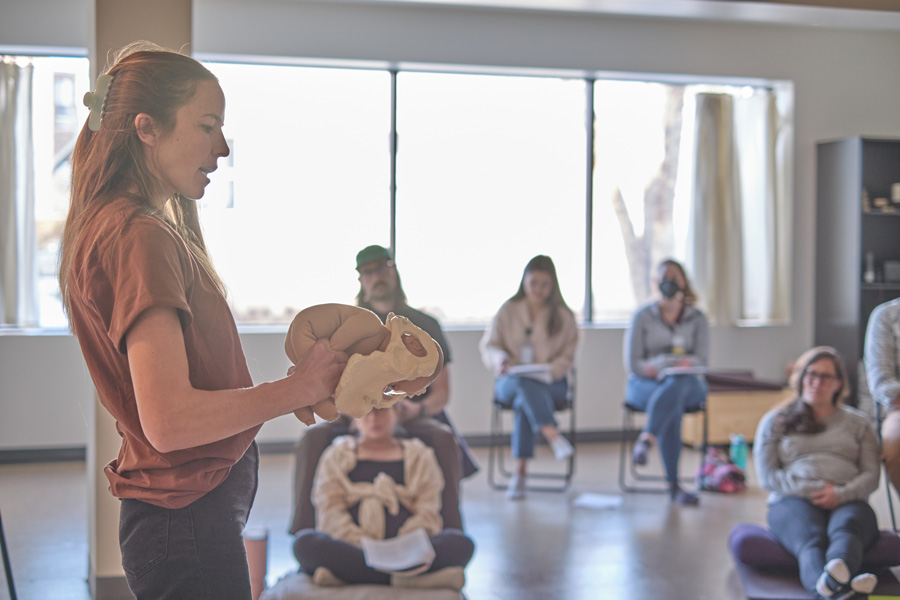
Why Should I Care About My Pelvic Floor?
Common issues related to the pelvic floor include low back pain, sciatica, incontinence, prolapse, painful intercourse and difficulty breathing. A healthy pelvic floor should be pain-free at all times.
Rest assured, there are things you can do today to give you more support!
How to Support a Healthy Pelvic Floor
1. Improve your posture
Body posture directly impacts the health of the pelvic floor. Your pelvis (which comes from Latin for “basin”) is the foundation on which your spine sits. Hence why it is so important to have optimal posture throughout your day, while sitting, walking, standing, sleeping, moving, etc.
The first step to improving your posture is awareness. One of the best things you can do for your pelvic floor is to find your sitting bones (the bony protuberances at the base of your pelvis) and sit on them! That’s what they are there for. The pelvic floor functions best when the pelvis is neutral (not tilted forward or backward).
We have a tendency to sit on our tailbones with rounded backs. Propping up your hips on a block or rolled blanket can assist finding optimal posture and a more neutral pelvis, which in turn positively affects your pelvic floor and deep breathing.
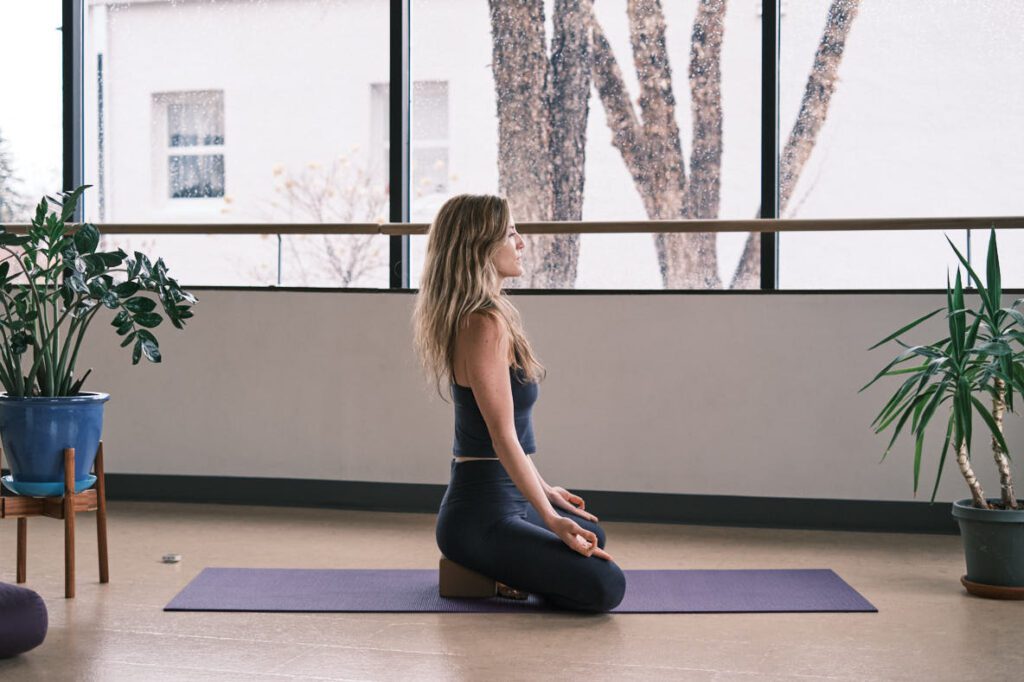
2. Breathe deeply
3. Relax your jaw
4. Practice yoga poses
The Best Yoga Poses For A Healthy Pelvic Floor
Figure Four
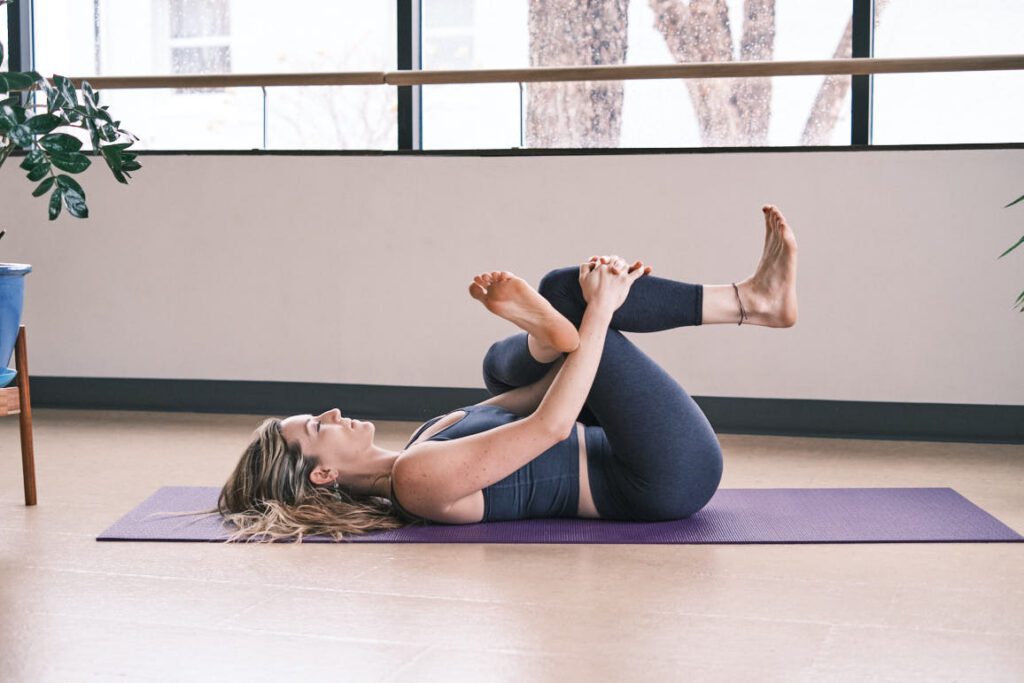
Oftentimes, a tight pelvic floor can be accompanied by tight glutes and external rotators. Taking a few minutes per day in figure four can alleviate some of the tension. Remember to keep your jaw relaxed too!
Happy Baby

Hold onto your outer feet and try to keep your low back connected to the floor, while you stretch. As much as possible, keep your shoulders relaxed, and your sitting bones turning towards the front of the room, versus up towards the sky.
Lizard Lunge
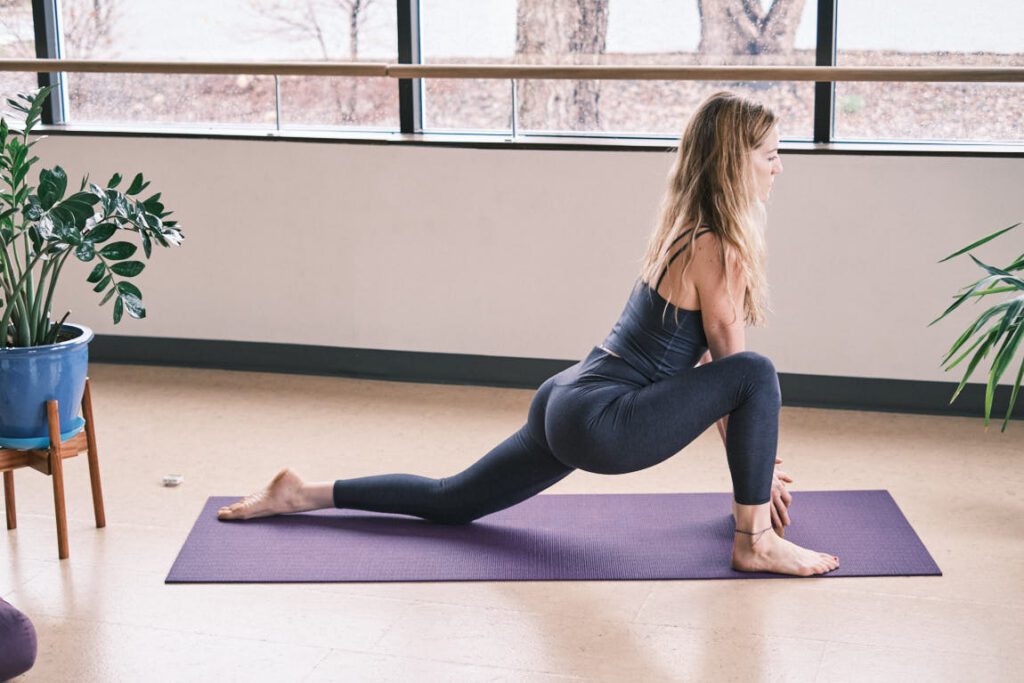
Bring your hands to a block on the inside of your bent knee. This posture can be held for a minute or you can come in and out of the posture, bending and straightening the knee, for more of a hamstring stretch.
Down Dog w/ Bent Knees

Bending your knees in down dog will allow you to untuck your tailbone and widen the sitting bones, creating a stretch for the pelvic floor.
Wide Angle Forward Fold
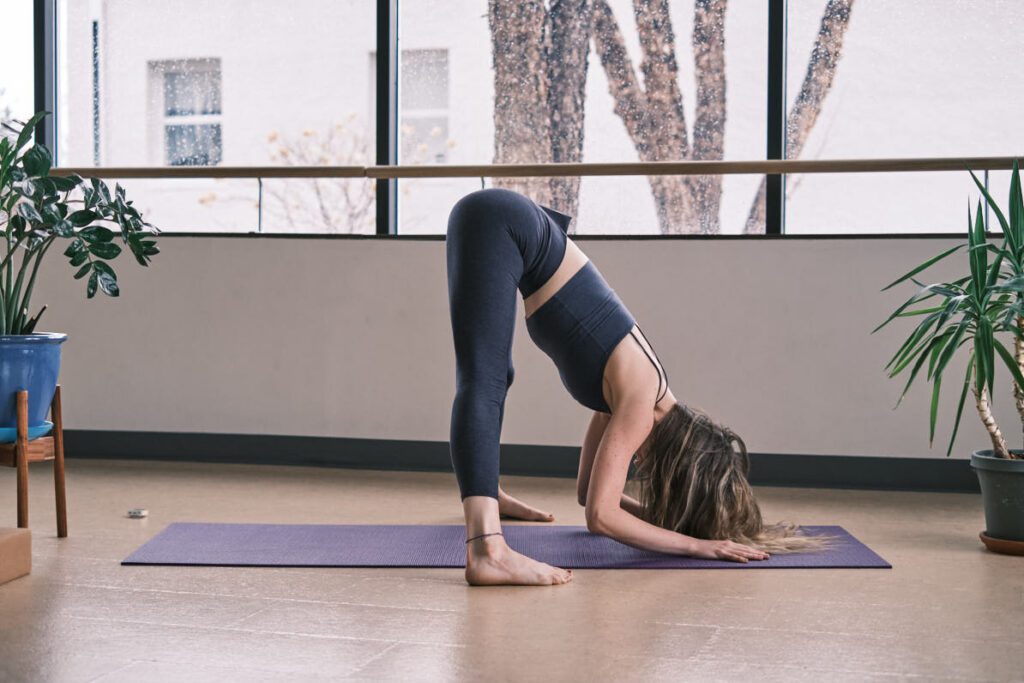
Bring your feet wide, in a slight pigeon toe position. Bend your knees enough that you can send your sitting bones to the sky, as your head gets heavy. Visualize the sitting bones widening as you fold forward.
Yogi Squat

Turn your feet out, wider than your hips, and squat as low as you can (it can also be very supportive to sit on a block in this posture). Keep your heart lifted, as your sitting bones drop down towards the floor.
Supported Butterfly Pose
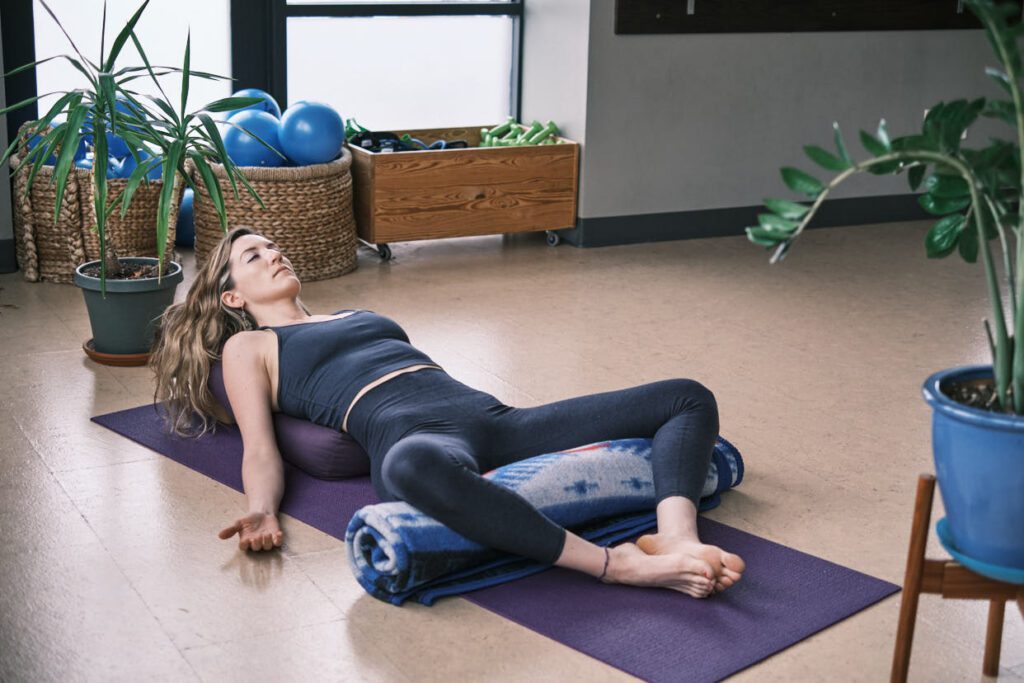
Never underestimate the power of rest on your healing journey. Propping up your back with a bolster, while keeping the hips on the floor, and a rolled blanket under the knees in butterfly pose is a passive way for your pelvic floor to relax and for you to practice deep, slow breathing.
*Always be sure to check with your healthcare provider before exercising, especially pre and postnatal. These are general guidelines that support the pelvic floor, but for more complex pelvic floor issues, please consult your provider.
Want Help With Your Pelvic Floor?
If you’re in the greater Minneapolis, MN area:
- Take one of our weekly Barre or Pilates classes in person or online
- Book a private Pelvic Floor Yoga Therapy session with Meghan
- Attend our next Wake Up Your True Core workshop (Oct 17th, 2024 and beyond)
-Meghan Foley, Pelvic Floor Yoga Therapist, Director of Operations at Blooma


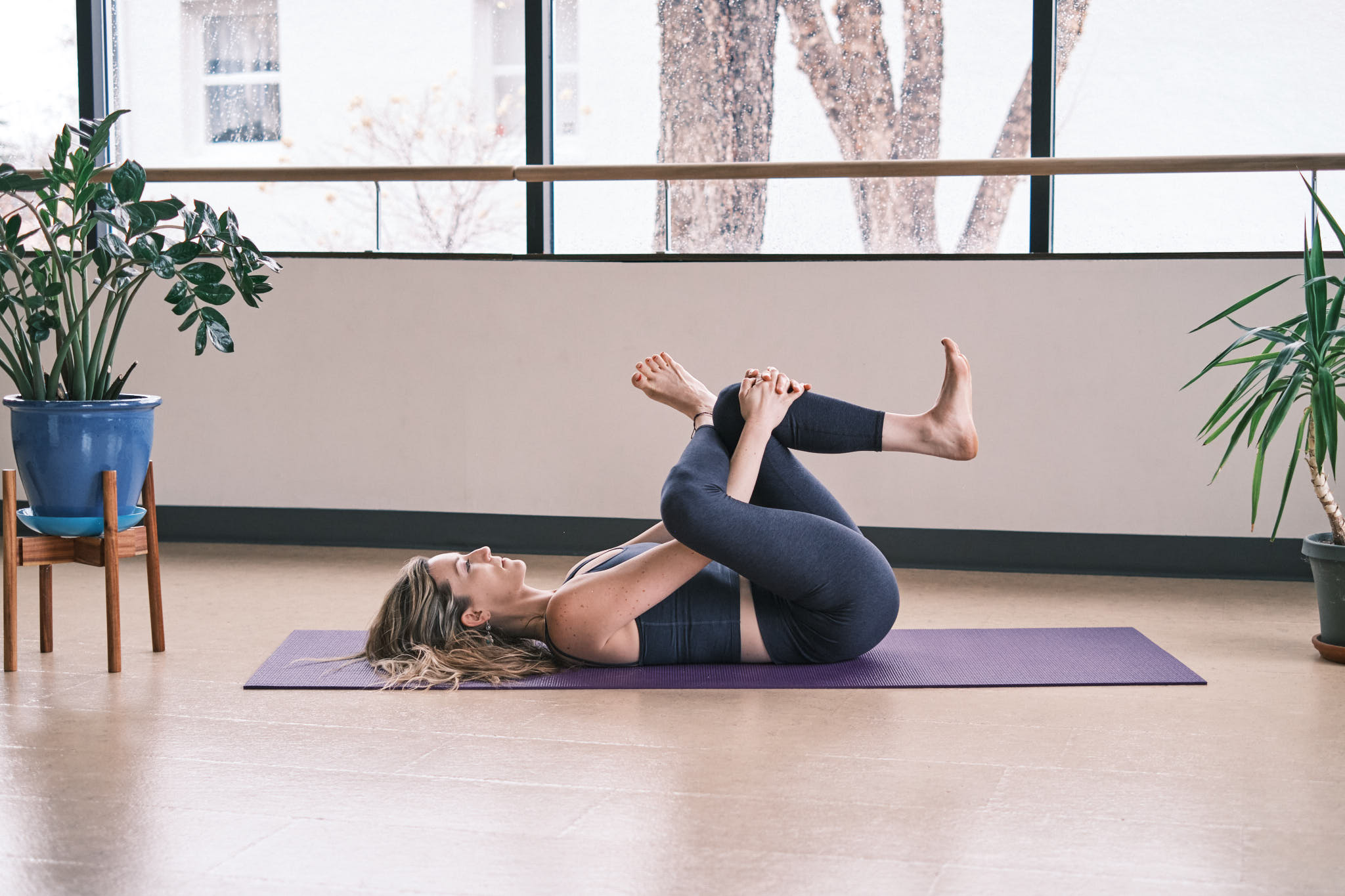





No Comments
Sorry, the comment form is closed at this time.